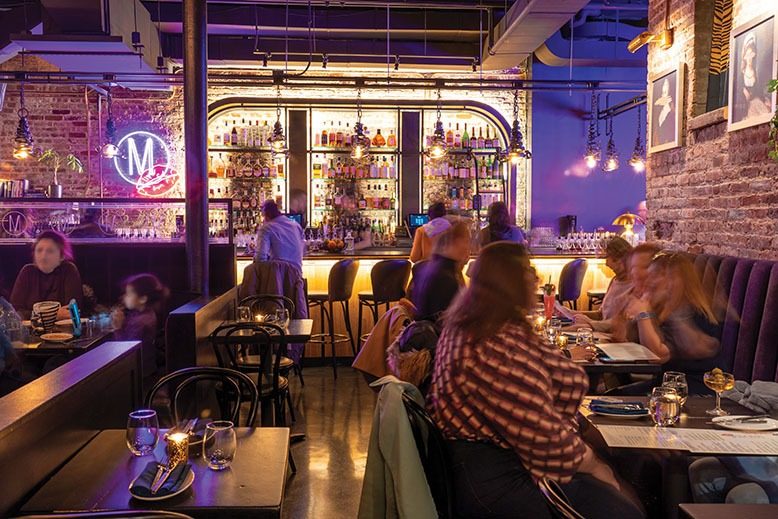



Stepping into the dusky subterranean haunt that is Madame in downtown Jersey City, you feel the hipster vibe but are not necessarily prepared for a redefining margarita like the Spicy Demoiselle. The most scintillating of many good cocktails here, it teases with licks of hibiscus, espelette chili, strawberry and mint; ravishes with its blush hue; and tickles with the perfume of orchid blossom in a thicket of mint.
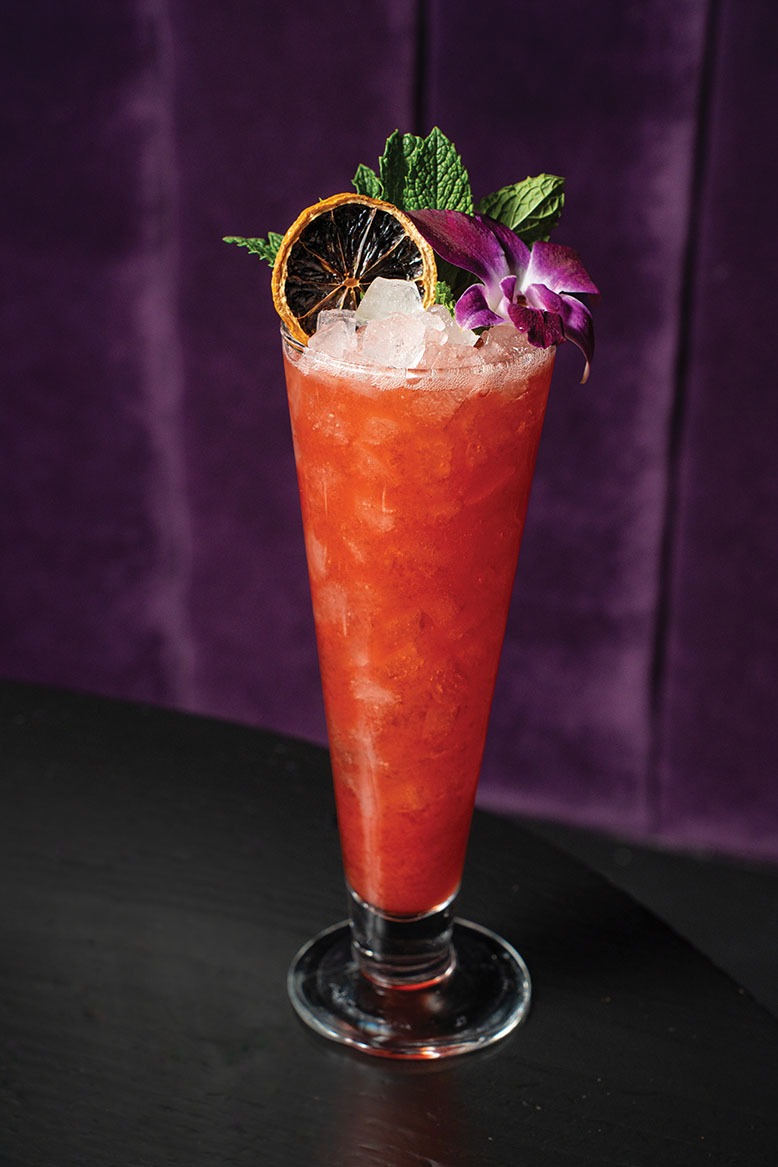
The spicy Demoiselle cocktail. Photo by Heather Willensky
Since opening in November, Madame has distinguished itself in food and drink. “We had a high bar to clear,” admits co-owner and executive chef Jamie Knott, best known for his two NJM Top 30s, the upscale Saddle River Inn and, just a few steps from Madame, spunky Cellar 335. “Our space was formerly occupied by Madame Claude Bis, a long-running and beloved neighborhood place. Madame is named in its honor.”
Knott, with executive chef Christopher Abbamondi, avail themselves of a door that lets them dash between Madame and the tiki-themed Cellar 335, which share the basement of the 1910-vintage, newly restored White Eagle Hall, once a Polish social club.
“We wanted the new Madame to be just as comfortable and welcoming as its predecessor…but with a naughty, night-owl mood,” says Nutley native Knott, 42. “My inspiration was the late-night scene at downtown Manhattan restaurants 20-plus years ago. That was a funky mix of club kids, fashion people, artists and writers—and chefs just off their shifts, like me. At all these places,” he adds, “the look and menu were always French brasserie, with a great burger and steak frites.”
Downtown Jersey City has established its own brand of, in Knott’s words, “this is the place to be” urban cool. At 400 square feet, the room is small, but a series of nooks afford privacy, plus a view of nearby tables.
[RELATED: The Best Restaurants in Jersey City]
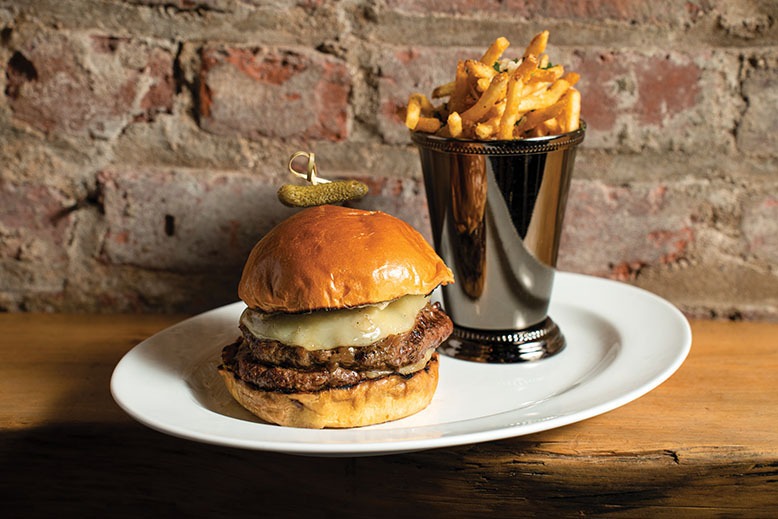
Double burger with cheese on brioche. Photo by Heather Willensky
Madame’s menu, compact yet tantalizing, boasts a great burger: two 4-ounce, Pat LaFrieda custom-blend patties laden with tangy sheep’s-milk Petit Basque cheese on brioche bun, with crisp shoestring fries and side of delectable black-truffle aioli, a sauce that improves everything. The grilled steak frites is not the usual hanger cut, but the brawnier skirt steak, the go-to in Argentina. Gauchos fire it medium or medium minus, the way to go here. Madame gives its skirt steak an au poivre finish with brined green peppercorns (more piquant than the usual black) and crowns it with a half-dozen blistered, pleasantly hot shishito peppers.
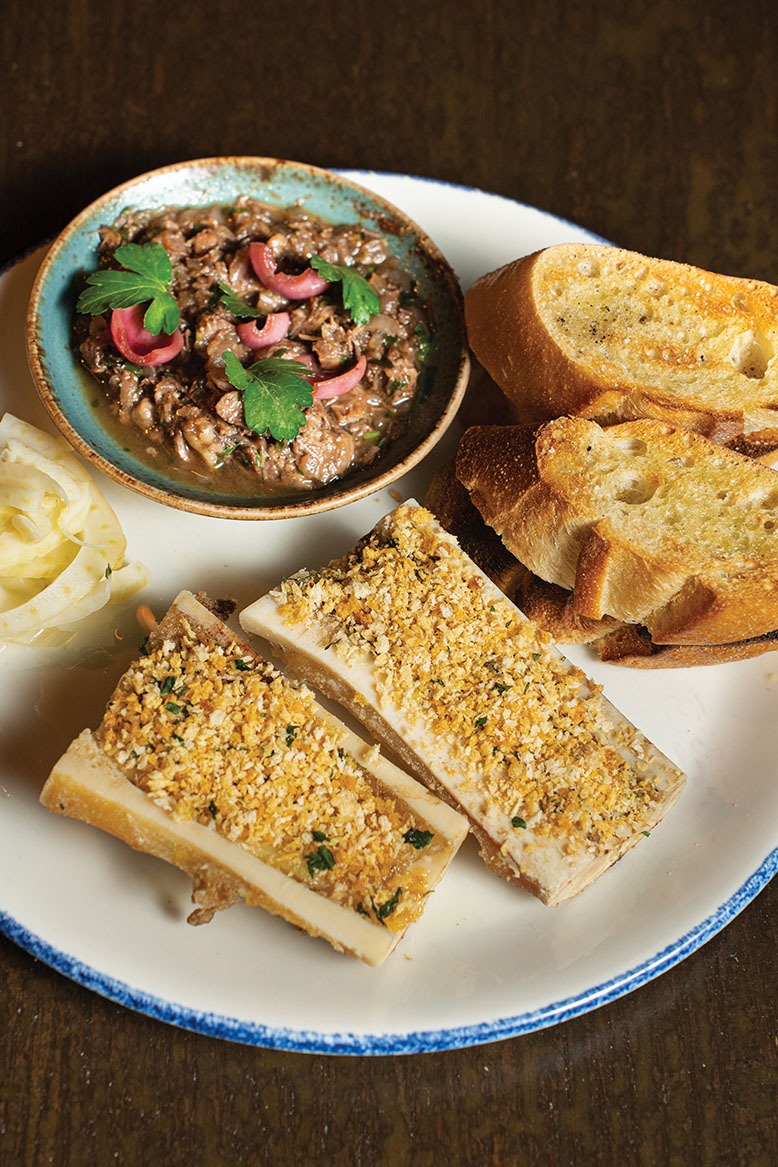
The generously appointed bone marrow appetizer. Photo by Heather Willensky
Madame’s brasserie dishes, faithfully executed and deftly seasoned, are a particular strength. Beef tartare is top-notch, its diced Prime Angus tri-tip mixed with a pickley, mayo-based remoulade, topped with an egg yolk and accompanied by baguette slices. Protein-rich bone marrow, sought out by our hominid ancestors, is braised in red wine and port, blended with bacon and breadcrumbs, and tucked into two halves of a split cow femur. Now that’s evolution.
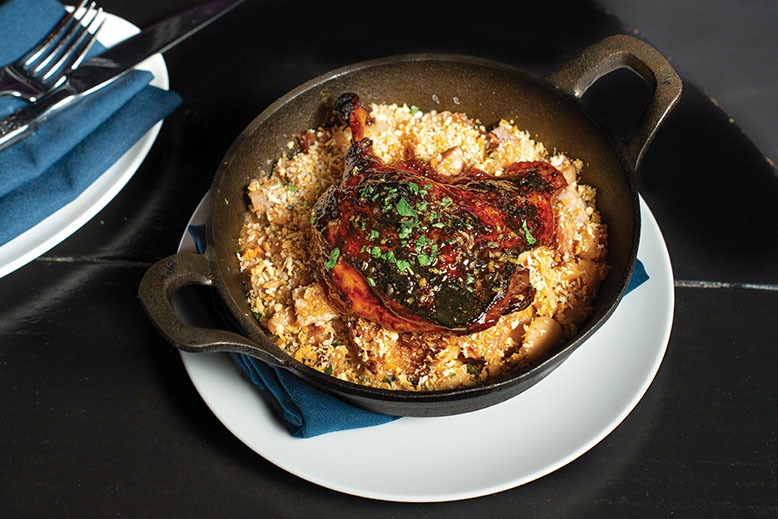
Madame’s winning take on cassoulet. Photo by Heather Willensky
Chef Abbamondi, who grew up in Northfield near Margate, remembers being “four or five and standing on a kitchen chair, stirring the marinara.” That led, eventually, to perfecting cassoulet, the classic southwestern French stew, under chef Jean-Marie Lacroix at the Rittenhouse Hotel in Philadelphia. At Madame, Abbamondi’s copious cassoulet, intended for two or even three diners, is served in a cast-iron crock, cradling the confit leg and thigh of a Rohan duck cured in its own fat. The confit rests on white beans, garlic sausage and merguez (Moroccan sausage), patiently braised in chicken stock, white wine, garlic, onion, shallots and herbs. Cassoulet is not easy to find, and this is a winning take.
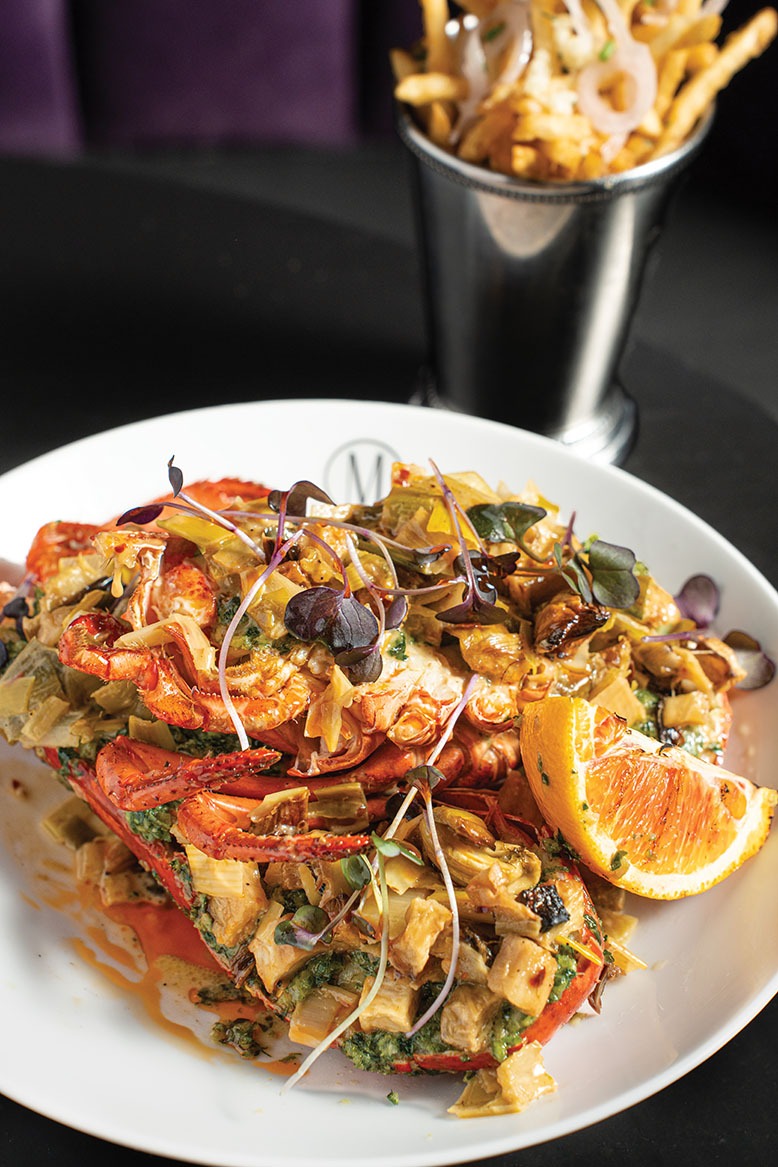
Lobster thermidor. Photo by Heather Willensky
Madame’s chicken schnitzel is not French, or pounded thin, or fried. But no matter. This version is delicious and generous: a breast and wing, brined, somewhat flattened, simply battered, pan-seared, and slathered with a creamy sauce supreme, redolent with tarragon and thyme.
I was surprised to see lobster thermidor, a hoary, heavy, outdated dish on offer. The menu actually puts the T-word in quotes, “because,” Abbamondi explains, “I lightened it up a lot. Originally, thermidor was baked in bechamel that formed a rich crust. We roast our lobster with leeks, root vegetables and aromatics like fennel, saffron and Pernod. We remove the meat for easier eating, return it to the shell, and cover it with a thick lobster broth that resembles the bechamel.” The result was so moist and flavorful, all my dining companions wanted a chunk. Or a claw. Or the entire tail.
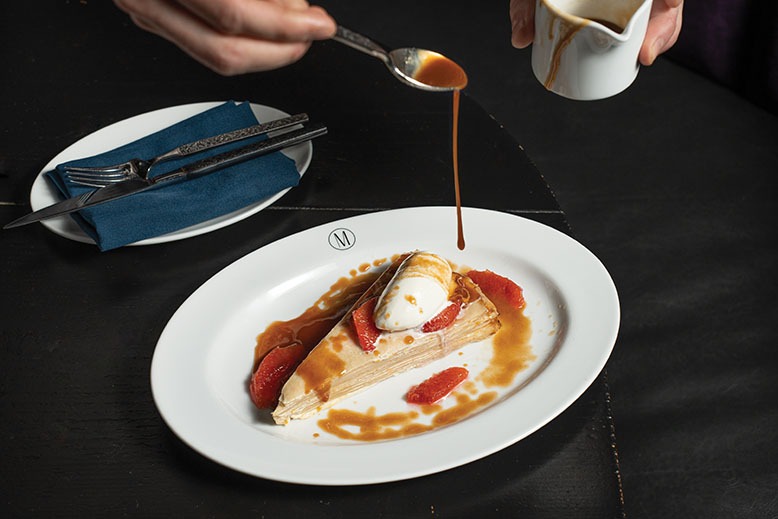
Thin dessert crepes are stacked, then cut like pie, topped and sauced. Photo by Heather Willensky
Desserts, made by Abbamondi, are tweaks on simple Gallic meal enders. Pistachio gelato adds appeal to profiteroles, ice cream-filled pastry spheres. A cake of stacked crepes is layered with blood-orange cream, soaked with Grand Marnier and dark rum, and flambéed at the table. Crème brulée delivers hints of lavender and pomegranate. But my preferred Madame dessert arrives in a goblet, not on a plate, the espresso nougat vodka martini.

A painting implies that whatever happens at Madame stays at Madame, explains Knott. Photo by Heather Willensky
I was curious why the framed portraits of lords and ladies have eyes or other features altered. “The message,” explains Knott, “is ‘see no evil,’ or…’what happens in Madame stays in Madame.’” He’s wrong about one thing. Word of Madame’s reinvention is spreading fast.
No one knows New Jersey like we do. Sign up for one of our free newsletters here. Want a print magazine mailed to you? Purchase an issue from our online store.
Restaurant Details
- Cuisine Type:French
- Price Range:Moderate–Expensive
- Price Details:Appetizers, $10-$53; entrées, $24-$48; desserts, $12-$18
- Ambience:Clubby, cozy but not snobby
- Service:Efficient



